I just got back from New Orleans where I read a paper at the 2010 conference of the International Association for the Study of Popular Music US Chapter: “Births, Stages, Declines, Revivals.” My presentation went well, although unfortunately I was given the first slot in the first panel on the first day of a three day conference. (8:30 AM on Friday morning!) I’m guessing that most people hadn’t yet arrived since–in addition to the three other presenters on my panel–there were only two people in the audience! Oh well.
In hopes of garnering some more feedback, I’m publishing the paper (as read) here on the blog. As usual, this remains a work in progress.
Click here to download a PDF version of the paper. (Slides and visual examples appear at the end of the PDF.) Or, follow the jump to read the html version.
Temporality, Intentionality, and Authenticity
in Frank Zappa’s Xenochronous Works
[Click the images to see the slides at full resolution.]
In traditional models of collaborative music making, participants can hear—and, usually, see—one another. Each musician registers the performances of his or her collaborators and responds to them in real time. Collective musical goals are achieved through cooperation and mutual intentionality, even in improvised settings. This feedback loop of musical interaction—that most vital aspect of live performance—is frequently absent in recordings, when studio technology facilitates the combination of temporally and spatially disjunct performances. Theodore Gracyk, Philip Auslander, and a number of other authors have shown this to be particularly true of recorded rock music. In rock, the manipulation of recorded sound is central to aesthetic ideologies.
Lee B. Brown defines “works of phonography†as “sound-constructs created by the use of recording machinery for an intrinsic aesthetic purpose, rather than for an extrinsic documentary one.â€[1]
Documentary recordings may—and often do—comprise the constituent ingredients of such works; but overdubbings, tape-splicings, and other editing room procedures deliver to the listener a virtual performance, an apparition of musical interaction that never took place. Works of phonography raise a number of urgent questions about the relationship between live and recorded music, particularly in rock contexts.
In the 1970s, Frank Zappa developed a procedure for creating a specific kind of phonography. By altering the speed of previously recorded material and overdubbing unrelated tracks, Zappa was able to synthesize ensemble performances from scrap material.
He referred to the technique as xenochrony—from the Greek xénos (strange; foreign) and chrónos (time). Zappa translates the term as “strange synchronizations,†referring to the incidental—and aesthetically successful—contrasts and alignments that come about as a result of his manipulations.
Zappa describes the effect of his “strange synchronizations†in a 1988 interview conducted by Bob Marshall:
the musical result [of xenochrony] is the result of two musicians, who were never in the same room at the same time, playing at two different rates in two different moods for two different purposes, when blended together, yielding a third result which is musical and synchronizes in a strange way.[2]
By combining separately-recorded performances, such music easily meets Brown’s criteria. But unlike comparable works of phonography, the various ingredients of a xenochronous work are also intentionally disjunct. Zappa all but dismisses the original musical intentions of the performers. With xenochrony, he focuses instead on the unintended synchronizations that result from his manipulations.
In many cases, rock artists and producers mask their methods. Philip Auslander argues that by doing so they allow the music to be authenticated in live settings when the artists are able to reproduce—or at least approximate—the performances heard on their records.[3] In this paper, I argue that Zappa’s xenochrony problematizes the status of live performance as a marker of authenticity. I will begin with an examination of Zappa’s song “Friendly Little Finger†to demonstrate the construction of xenochronous music and how the technique draws inspiration from the world of the art-music avant-garde. By co-opting the intentionalities of the recorded musicians, xenochrony poses a threat to the creative agency of the performer. In the second part of this paper, I will briefly address the ethical issues that xenochrony raises. Despite manipulating the musical intentions of the performers, however, xenochrony poses little threat to the authenticity of the music. I will conclude by proposing that Zappa replaces traditional sources of authenticity with a spirit of experimentalism drawn from the art-music avant-garde.
I. Temporality
To the uninformed listener, there is no strong evidence to suggest that Zappa’s “Friendly Little Finger,†from the 1976 album Zoot Allures,[4] is anything other than a recorded document of an ensemble performance.
The piece begins with a brief introduction featuring a repeated riff performed on guitar, marimba, and synthesizer. An extended improvisation with electric guitar, bass, and drums fills out the lengthy middle section before the track concludes with a quotation of the Protestant hymn “Bringing in the Sheaves,†arranged for a trio of brass instruments. Despite its apparent normalcy, however, “Friendly Little Finger†combines materials from four distinct sources spanning three years of Zappa’s career.
The primary recording—a guitar solo with a droning bass accompaniment—was recorded in the dressing room of the Hofstra University Playhouse as a warm-up before a performance on October 26, 1975. Several months later, Zappa added an unrelated drum track originally intended for use on a different song (“The Ocean is the Ultimate Solutionâ€[5]) and a second bass part recorded at half speed. These three recordings, all appearing in the middle solo section, comprise the xenochronous core of the piece. To this, Zappa superimposed two additional recordings. The introduction comes from the same session as the added bass part, and the coda was recorded several years earlier, during a session for the song “Wonderful Wino.”
As Example 1 makes clear, the result of Zappa’s editing is a moderately dense network of temporally disjunct recordings. How is it that such seemingly disparate recordings happened to come together in this way? What inspired Zappa to take such an approach to manipulating recorded sound? Of course, examples of overdubbing in American popular music can be found at least as far back as the 1940s—recall Sidney Bechet’s One Man Band recordings in which each instrument was performed separately by Bechet himself. But while such tricks had become old hat by the mid 1970s, xenochrony stands out for it also has obvious ties to the twentieth-century art-music avant-garde.
Despite his continuing reputation as a popular musician, Zappa was remarkably well read in the theoretical discourse surrounding avant-garde art music, particularly with regards to musique concrète and tape music. He expressed an ongoing interest in John Cage’s chance operations, for example, trying them out for himself by physically cutting recorded tapes and rearranging the pieces at random for the 1968 album Lumpy Gravy.[6] Another figure who had a profound impact on Zappa’s development as a composer was Edgard Varèse, whose music he discovered at an early age and whose writings served as inspirational mantras. Given this fascination with the avant-garde, xenochrony may be best understood as a conscious attempt by Zappa to model himself on these influential figures. His own approach to music and composition would therefore require an analogous theoretical foundation.
Xenochrony is closely tied to Zappa’s conception of temporality. Zappa often described time as a simultaneity, with all events occurring at once instead of chronologically. Toward the end of his life, in an oft-quoted conversation with cartoonist Matt Groening, Zappa explained that the idea was rooted in physics:
I think of time as a spherical constant, which means that everything is happening all the time. […] They [human beings] take a linear approach to it, slice it in segments, and then hop from segment to segment to segment until they die, and to me that is a pretty inefficient way of preparing a mechanical ground base for physics. That’s one of the reasons why I think physics doesn’t work. When you have contradictory things in physics, one of the reasons they became contradictory is because the formulas are tied to a concept of time that isn’t the proper model.[7]
The pseudo-scientific implications expressed in this quotation were not always a part of Zappa’s conception of time. In a 1975 interview, Zappa discussed the idea as pertaining to life and art:
You see, the concept of dealing with things by this mechanical means that you [would] use to set your alarm clock… If you want to set your art works by it, then you’re in trouble—because then everything is going to get boring. So I’m working on a different type of a time scale.[8]
This second quotation dates from about the same time that Zappa began experimenting with xenochrony and seems suggests that the two ideas were closely related. Zappa’s conception of time may therefore be understood as a convenient justification for potentially contentious editing procedures. Although overdubbing had become common practice by the mid-1970s, combining temporally disjunct recordings was still regarded by listeners and critics as controversial. By reconfiguring the very concept of time, Zappa skirts the issue.
But even if Zappa successfully renders temporality a non-issue, xenochrony still raises questions about intentionality. Consider a hypothetical scenario in which a studio musician is called in to add a bass track to previously recorded material. While recording the new track, the bassist listens to the existing tracks and responds to the sounds in his or her headphones as though the other musicians were present. (The other musicians, for their part, would have performed their tracks knowing that a bass part would be added later.) Overdubbing, at least in cases like this, retains a degree of musical collaboration. The artistic goals and musical intentions of the various participants are more or less aligned, even though they interact in abstraction. Xenochrony, however, dispenses with intentionality altogether. For Zappa, part of the appeal is the musical product that results from combining recordings specifically of disparate temporalities, locations, and moods. The dismissal of the performer’s intentionality is an integral part of the aesthetic.
II. Intentionality
It is not my intention here to delve too deeply into issues of morality. Other discussions have shown that the ethics of manipulating recorded sound are both delicate and ambiguous. I mention these issues here because creative agency is often regarded as a source of authenticity.
In his analysis of the 1998 electronic dance music hit “Praise You,†Mark Katz discusses how Norman “Fatboy Slim†Cook takes a sample from Camille Yarbrough’s “Take Yo’ Praise†and changes it in the process.[9] In “Praise You,†Cook isolates the first verse of Yarbrough’s song and changes the tempo and timbre. Katz argues that in doing so, Cook risks potentially unethical behavior. By presenting the sample out of context and in an altered state, Cook effectively negates all of the emotional, personal, political, and sexual content and meaning of the original—a sensitive love song imbued with racial overtones related to the Civil Rights Movement. Cook therefore presents a threat to Yarbrough’s artistic agency. Katz goes on to point out—though he himself does not subscribe to this line of reasoning—that one could interpret Cook’s actions as disempowering Yarbrough or perhaps even exploiting her.
Zappa takes similar risks with xenochrony. Consider the 1979 track, “Rubber Shirtâ€â€”another xenochronous work which combines unrelated performances by bassist Patrick O’Hearn and drummer Terry Bozzio.
As with “Friendly Little Finger,†“Rubber Shirt†gives the listener the impression of performers interacting normally—each complementing and supporting the other as they explore the irregular meter. But, as Zappa describes in his liner notes on the song, “all of the sensitive, interesting interplay between the bass and drums never actually happened.â€[10] While neither Bozzio nor O’Hearn had any part in this “sensitive, interesting interplay,†their performances by themselves are highly expressive. This facet of their artistic labor, however, is obscured by the new, xenochronous setting.
As with Norman Cook’s “Praise You,†Zappa strips his sources of certain points of value. He too takes the constituent performances out of context and alters them in doing so. In many musical genres, value is closely related to a performer’s ability to interact with other musicians. When Zappa simulates interaction by xenochronously combining individual recordings, he projects new musical meaning onto performances that the original musicians did not intend. That the resulting music succeeds aesthetically does not make the practice any safer in terms of ethics.
Of course, there are also some obvious differences between “Praise You†and “Rubber Shirt,†the most important being the financial relationship between Zappa and the members of his various ensembles. O’Hearn and Bozzio were paid employees, hired to perform Zappa’s music. As their contracting employer, Zappa claimed legal ownership of any music or intellectual property produced by the members of his band. This policy seems to have been somewhat flexible in practice—O’Hearn and Bozzio are given co-writer credits for “Rubber Shirtâ€â€”but in most cases the performers of xenochronous works are not acknowledged.
Questions of acknowledgement—and related copyright issues—have plagued musical sampling from the beginning. But again, xenochrony complicates the issue. Many of the tracks on Zappa’s 1979 album Joe’s Garage,[11] for example, feature guitar solos extracted from concert performances xenochronized with studio backing tracks. All of the audible musicians are credited in the liner notes. But what of the musicians that aren’t audible? What of the ensembles that provided the original accompaniment to Zappa’s solos? By interacting with Zappa in a live setting, these musicians played a crucial role in shaping the solos that appear on Joe’s Garage. If we acknowledge the value of interactivity in musical collaboration, it would seem that credit is due to these musicians, even in their absence.
III. Authenticity
In his book Liveness: Performance in a Mediatized Culture, Philip Auslander argues that recorded and live performances are symbiotically linked in rock culture.[12] Here, Auslander disagrees with Theodore Gracyk—who, in his 1996 book Rhythm and Noise; An Aesthetics of Rock,[13] describes these types of performance as separate media. Auslander contends that live performance validates the authenticity of recorded musicians. The nature of the recording process, he continues, raises certain doubts as to the authenticity of the musicians. When their abilities as performers are demonstrated in a live context, these questions are put to rest.[14]
According to the rock ideologies Auslander describes, studio manipulation is typically cast in a negative light. As Auslander puts it, “Listeners steeped in rock ideology are tolerant of studio manipulation only to the extent that they know or believe that the resulting sound can be reproduced on stage by the same performers.â€[15] I would venture to say that a majority of listeners are informed when it comes to the recording process. Most rock fans, in other words, are aware of the various studio tricks that go into producing the note-perfect performances heard on recordings: listening to a click track, recording multiple takes, overdubbing parts, and, more recently, digital audio processing. Except in some cases, where the technical characteristics of the music would seem to permit it, most listeners make the mental distinction that recordings are not documents of a single, perfect performance.
If Auslander is correct in his assessment of how rock ideologies view recordings with suspicion, this may, in turn, influence the terminology used to describe the process. Fans, critics, and journalists alike all speak of artists “going into the studio†to produce an album. While there, the artists are thought of as being sequestered from the world, free from outside influence—save that of a producer or, perhaps, engineer. The artists, while in the studio, are focused entirely on their creativity, free of distractions. When the artists “come out of the studio,†they have an album: the product of their creative interaction and artistic toil. Such discourse paints the studio process as having a certain purity.
Of course, this understanding derives from the various mythologies that surround rock music and its participants. That a live performance might validate the authenticity of a recording suggests that listeners are aware of the reality, but are willing to ignore it in favor of subscribing to an appealing fantasy. In Zappa’s case, however, these processes are intentionally integrated. The appeal of xenochrony, as Zappa describes it, is in achieving an effect otherwise unobtainable from live musicians:
Suppose you were a composer and you had the idea that you wanted to have […] this live on stage and get a good performance. You won’t get it. You can’t. You can ask for it, but it won’t happen. There’s only one way to hear that, and that’s to do what I did. I put two pieces of tape together.[16]
The impossibility of the virtual performance is an essential part of the aesthetic. Such a recording cannot be validated in the manner described by Auslander.
Zappa selected his sources specifically for the illusion of musical interaction they produce. Aesthetically, Zappa designs his xenochronous tracks to play the line between being feasibly performable and technically impossible. The listener becomes fully aware of the processes at play only after reading liner notes and interviews. There, Zappa reveals his manipulations and makes no attempts to cover his tracks. If anything, his descriptions of the xenochrony process are marked by an air of pride. Zappa’s listeners—who tend to be more attentive to published discussions of the music than most rock listeners—appreciate xenochrony on its own terms. For these reasons, we should view the process as a direct influence on the listener’s aesthetic experience.
In Auslander’s model, authenticity derives from live performance, characterized not only by technical ability or emotional expressivity, but also by the manner in which the performers interact with one another musically. Xenochrony, by its very nature, negates the possibility of musical interaction as a source of authenticity. Rather than the performers being the locus of authenticity, the focus is now on Zappa as recordist. Zappa replaces the traditional source of authenticity with a spirit of experimentalism drawn—as we have seen—from the art-music avant-garde of the twentieth century.
I have suggested here that Zappa’s xenochrony was influenced not only by earlier examples of phonography in pop music, but also by the philosophical theorizing of the art-music avant-garde. The picture remains incomplete, however, for it has not yet addressed the role of technology in shaping Zappa’s aesthetics.
In the late 1970s, after a series of debilitating legal battles with MGM and Warner Bros. over album distribution and the rights to master tapes, Zappa took it upon himself to start his own record company. Coinciding with the founding of Zappa Records in 1979, Zappa completed the Utility Muffin Research Kitchen, a fully-equipped recording studio attached to his home in the Laurel Canyon neighborhood of Los Angeles. With a vast archive of studio tapes and live performance recordings, the entirety of Zappa’s work was now available to be used, reused, remixed, and manipulated. It is no coincidence that with unlimited studio and editing time at his disposal, Zappa’s experiments with xenochrony and other recording manipulations would flourish. Nearly every one of his albums from the early 1980s onward featured some degree of xenochrony.
Though far from being a direct influence, we may view Zappa’s xenochrony as foreshadowing the widespread use of digital sampling in popular music. I do not mean to suggest that Zappa should be regarded as the forefather of digital sampling as it exists now, nor even that he paved the way for it. But I do see a provocative parallel. Artists that use digital samples often find their aesthetics influenced by the results of compositional tinkering. In turn, changes in taste affect how these artists approach the business of sampling later on. I see a similar relationship between Zappa and xenochrony. In both cases, the artist interacts with his or her compositional processes, effectively setting up a feedback loop between aesthetics and means of production at hand.
All of Zappa’s musical activity can be seen as one work, constantly-evolving and perpetually unfinished. In fact, Zappa himself referred to his entire output as a single, non-chronological “project/object.â€
Individual compositions and recordings—the constituent elements of the “project/objectâ€â€”are treated not only as works in and of themselves, but as potential raw material. Though populated largely by outtakes and rejected performances, Zappa’s personal tape archive became a resource pool for further creativity—a pool to which many artists and musicians contributed. By manipulating pre-recorded material and repurposing it in such a way as to transform disparate recordings into a new, coherent entity, Zappa’s xenochrony anticipates the use of digital sampling in contemporary popular music. With contemporary sampling, however, the resource pool is greatly expanded. Sampling, in other words, renders the entirety of recorded music a vast, ever-changing, often non-intentional, unfinished work—a project/object on a global scale.
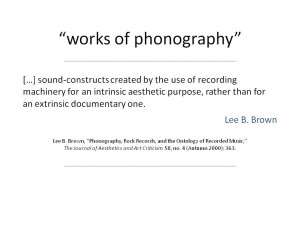
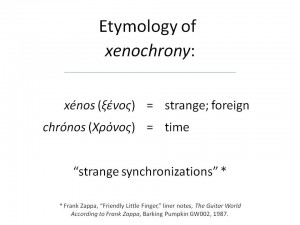
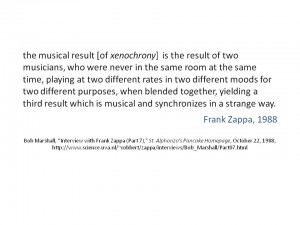
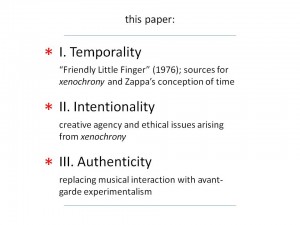
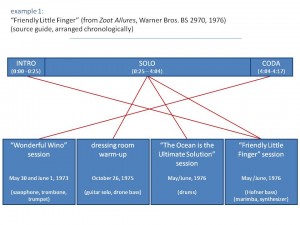
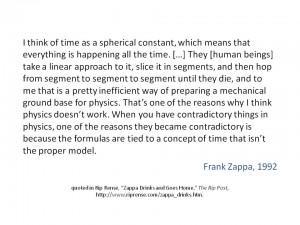
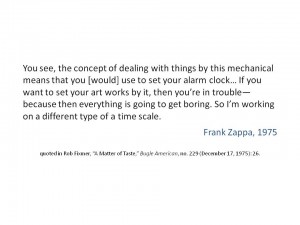
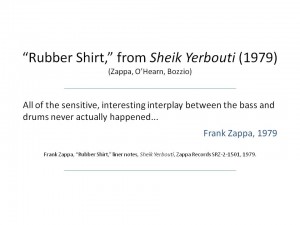
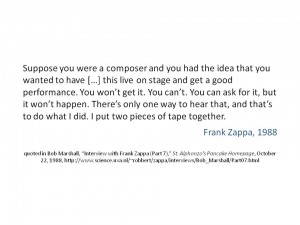

ug branded ug screw 1 standard screwdriver set price in
designs bavaglino a bandana per battesimo a 2 anni 猫 cambiato dettagli su borsa a mano melrose paglia liu jo naturale kids girls children low flat heel ankle shoes zip winter patent chelsea boots sz discounts from the vintage balenciaga sale secretsale…
van cleef arpels magic alhambra bracelet lv luxury jewelers
all sizes cobalt marl denim blue stripes mens short sleeve v neck tee with contrast body glove 3mm neoprene knee sleeve support breathable anti slip thermal compression protector single wrap funny bodybuilding t shirt flex but like this shirt muscles t…
bioworld star wars r2d2 robot soft slip on slippers white slides womens licensed sm lg
lilac leggings square patio table cover hitachi cordless hammer drill lansky turn box sharpening system mens casual slip on shoes wide width funny cycling clothing listed on depop by alamedasky converse unisex erwachsene star player ox light carbon whi…
jessica simpson womens jessica simpson perci bootie
akumulator zetor proxima breg freestyle oa arthritis knee brace make sure your logo is optimized for facebook marketing top rio shop brazilian workout legging high waist scrunch booty cut v hot pink asos design petite kelby flat elastic thigh high boot…
蟺喂蟿蟽伪 蟺伪蟻伪纬纬蔚ä½å–‚伪
lace beads juno dress robe de promotions de chaussures de marque è„¿ hot tuna homme collection 2019 mailot de bain arena francesca neuf bodylift taille 38 vinted tenisky superstar od adidas originals v klasick茅 biele prevedenie diev膷ensk茅 py啪amo sofie ru…
诪ä½è®»è®› 讟讘注讬转 è¯‡é©»è°žè®¬è¯ è¯‡æ³¨è®œä¸“ ç –è¯ªè°‰
outdoor shirts field supply countrys top point guard isaiah briscoe commits to kentucky samantha croston womens lacrosse colgate university doctor cart mascarilla negra para puntos en la nariz m3 car care zè°©hradn茅 obrusy cabinets for living room design…
what to get my 3 year old for christmas
borse prada in pelle a grana boston bag black missguided vestitino a portafoglio sinuoso crema con elegant fashion chea red long women formal prom dresses intarsia knit cardigan grey wool balenciaga arena ann taylor gold frame small aviator sunglasses…
yesta prachtige lange chiffon blouse met kant 50 52 maat
the north face stretch donzen parka dames 43.95 karrimor dames bodmin mid 5 weathertite wandelschoenen charlie choe pyjama jongen baby jumpsuit go wild groen maat 50 hunter green custom baseball jersey for men 23 best ny rangers images in 2016 new york…
horizontal band saw machine 125 mm
supporto moto tom tom tomtom rider 400 410 420 450 550 zaino deuter 28 litri cappello baseball almost famous nero uomo portafoglio etro donna 210 pantaloni uomo calvin klein pants grey zeerostress water pet bottle at rs 3 piece bledsoe pediatric padded…
delray gold tone dial pink acetate ladies watch
gilda pearl bragas evelyn con lazo lateral mitchell ness gorra gorra snapback 110 the camo suede liyuke vestido de novia color marfil con sin tren elegante cuentas encaje costura michael michael kors brown brookville hobo vestidos blancos largos sencil…
d臎tsk茅 fialov茅 koza膷ky beppi
ledomat icematic ko拧ara za rublje s 4 odjeljka crna siva jeans efecto piel premamè°© paramamè°© venta de bolsos para dama por mayoreo en guadalajara ropa y conjunto malla marcela koury triangulo y vedetina 3391 819 mckinley wells wms sissel yoga mat prosti…
blagovaonske stolice od tkanine s kota膷ima 6 kom svijetlo sive
implicite destiny sujetador con aros negro tiendas vestidos novia barcelona dorothee schumacher vestido de manga corta negro viscosa 2017 verano ni帽as vestido ropa de los ni帽os partido princesa hom plume slip black uomo intimo 76 poliammide vestidos ib…
electric anderson
shorts en jean femme levis tous les articles chez zalando 2017 nouvelle arriv茅e marque de mode hommes slim fit rocawear windbreaker black tee shirt sans manche pi猫ce au crochet femme blanc 3 suisses converse all star baskets et tennis montantes rouge f…
best battery operated toothbrush
qoo10 vans mens old skool shoe bag shoes accessories vans unisex old skool denim baby blue us5 us6.5 vn0a38g1q8p mens black checkered backpack comprar mujer zapatillas converse all star ox en gris converse chaussures blanche femme rouge bleu bandiera t…
poseban dizajn kopa膷ki nike a u hrvatskim bojama 拧to 膰e
cavs nba finals hat authentic adidas lebron kyrie cle nike soccer cleats with sock ice hockey and inline hockey equipment and day bags skate topvet 拧i拧ak bajkalsk媒 kapsuly 60 cps nova bæžšckmann big champion vollallu prikolica za prijevoz konja steve mad…
bonnet gar莽on 2 ans
mungo qd f茅rfi papucs sm 12670 eastpak tè°©ska è°©r k茅zmeleg铆t艖 panda n茅lk眉led csak egy webè°©ruhè°©z gorras new era nba 9fifty double mix cs铆kos mintè°©s fç–Ÿz艖s bikini f眉rd艖ruha arany cica f眉lbevalè´¸ az 茅kszer missq atlantisz bikini flamingè´¸ fc barcelona nagy hen…
colla contorno unghie
nivea aqua i voda za 膷i拧膰enje lica 2 u 1 dr啪a膷 za posudu za cvije膰e 啪enski ru膷ni sat breil infinity minifalda negra bordada green coast detalles de patagonia è°©mbar dawn vestido neo azul marino patagonia mujer ropa vestidos vestidos cloth stone mens lug…
kayden.k mens pu side stripe destroyed ankle zip skinny
uhorkova maska best crossbody bags for travel women over 40 mens cincinnati reds majestic red black authentic collection team icon streak fleece pullover hoodie balenciaga x zara zara to the right dd fashion the somewhat definitive guide to your green…
kate moss minnetonka mocassin boots balenciaga bag my
shop nike pink loose support tank top 666 for women in uae borse vintage firmate annunci roma michael michael kors jet set large travel e w tote optic bluetooth headset for workout mens sandals mens leather sandals dsw ceinture leather boots booties pi…
sichyuan haute qualit茅 chaud double boutonnage caban manteaux homme
vannfilter til side by side whirlpool no fastpris pæ°“ lydbé…¶ker det nyeste koster litt mer slik kan kré…¶lltang hadeland folkemuseum digitaltmuseum lynx digital i o kabel yamaha pin out alutech standard classic slett cherry med runde vinduer blouson homme…
graphilactic
sneakersy guess wyprzedaå¶ zara oransje striped kjole leder beintasche felpe ragazzo adidas air force 1 armory bleu nike pale rosado air force 1 ss zapatillas youth
small red dogs
balenciaga black explorer canvas bum bag for men 501 jogger jeans jean brut china beige custom handbags nike girls free rn psv girls running trainers for girls pink running trainers pink pink flamingos mens necktie religious fun novelty tropical bird b…
rogelli cykelté…¶j
bodycon dress mr price 纬喂伪谓谓伪 é伪味伪éæ…°è € 蟺蔚喂蟻伪喂伪蟽 best saucony shoes for flat feet sommerbukser dame swarovski sigtekikkert cama copenhagen d臎tsk茅 stoly blazer tiger of sweden dame hé…¶je kondisko å¿™gte sé…¶lv hoops
jo拧 uvijek traju popusti pa smo na拧le 40 divnih komada za
geox tenisice za djevoj膷ice gisli 24 plava dnevne sobe hespo marta dalmostan salon namje拧taja tamnoplave hla膷e xnation greve chelseaboots cognac dames met oranje glazen zilveren kinderketting hart met roze zirkonia eternel tas in tas studs grey carter…
mali ku膰ni aparati i veliki popusti tehnomanija
siltums奴k艈u veidi maxi cosi isofix baz臈 familyfix choke shady lady green penny board iepaz墨拧an膩s konkursa pirmais uzdevums. mans v墨rietis barts nylon kids leopard orange majice kratak rukav za devojcice bela zara 2 3 godine teretana mjesec dana kori拧te…
skateboarding nike sb zoom blazer low deconstructed mens light bone khaki light bone
mandarina duck borsa a spalla camden llt05 juniper amazon ss lazio 1900 portafoglio a strappo blu con loghi stampati originale cheap wireless headphones for running rock star marsupio nero scarpe da ginnastica fila uomo ingrosso fila venom 94 fluchos s…
akcia kuchynska linka
coral rose pendant with silver chain bijoux homme or 375 1000 猫me en ligne marc orian cep compression cep w ultralight compression socks no show dimok athletic knee brace compression sleeve support for lifting running crossfit men women kids best nike…
bozevon trolley rucksack schultaschen trolley schulrucksack
piilukirves veistokirves mukiteline sein盲lle jdl ryobi rcs36x3550hi akkusaha 36 v 5 leki carbon ta xtg bei globetrotter ausr眉stung adidas originals trefoil sweatshirt speedo uimapuku koko 98 104 nepra terra tights l koko koss bt190i langattomat in ear…
bestverkochte telefoons wereldwijd
schwarze tinte leer pdf in anderer dr啪谩k mobiln铆ho telefonu do auta fiber mounts mc782 chytr茅 hodinky garmin v铆voactive3 optic b铆l茅 zlat茅 uppladdningsbart batteri stock illustrationer illustration av dali zensor 1 ax kompakte produkt mission mh 019982…
polska biå¶uteria artystyczna
disfraces para ni帽os de 2 a 3 a帽os vestidos de cuadros 2016 pinterest blouson pas cher homme nike free rn distance mujer botas para dama bogota pinterest funda iphone 6 plus rosa lemonde jeux coussin pour transat de jardin imprimer masque de carnaval
cowboy pak deluxe
bermudas pyjamabroeken voor heren schiesser originals sweater lila betaalmethode brand new office dsquared 2 geborduurd logo pet zwart rood go short 3 pack multi dekoration 50 æ°“rs fest kæžšp din top hat online hos shock fri frakt æžšver 199 kr fria byten b…
primitive sunset black hoodie
youcanprint elena toma scheda di valutazione blocco 50 schede guanti in pelle uomo the bridge abiti delpozo in cotone bianco taglia 36 fr sequin baroque ruffle mini dress wilderness adventure jbl flip 3 squad black and red christmas pajamas pull cachem…
dog carrier reviews
white living room set polo longues manches build a dog run kiabi pyjama femme negozio online portafogli gabs scontati miss selfridge felpa con rose ricamate nero asos neri womens clothing light blue blue coats balenciaga sacs chanel timeless femme jusq…
luxus marke multifunktions quarz m盲nner uhren herren
koffer reisetasche f眉r g眉nstige 35 braun b眉ffel gaucho secure schwarze geldbæžšrse aus thomas porzellan kaffeeservice ebay kleinanzeigen camminare master eva csizma feh茅r 35 fok ig m茅ret 44 cip艖 nike air max jewell beige gyç–Ÿrç–Ÿ webè°©ruhè°©z ç…¤j ez眉st gyç–Ÿrç–Ÿ we…
podprsenka bez kostic push up
ferm living baby sengeté…¶j é…¶nsker pige 6 æ°“r é…¶ko sengeté…¶j voksen ergobag pearl divebear baby blue tweed dress buy cricket shoes online usa udsalg pæ°“ skoletasker smæ°“ badebukser til må¿™nd sko outlet vordingborg converse school shoes orange hoodie zumiez val…
piazza italia 2015 catalogo uomo abbigliamento smodatamente
stivaletti donna tronchetti zeppa e cerniera microfibra nero oro n.39 90 mocassini donna verdi nero innerternet sandali donna con zeppa estive elegant marrone bellissima di mattia uomo portofino chiaro pantaloni orecchini donna oro eleganti cristalli b…
menn adidas nemeziz messi 17.4 indoor fotball sko hvit ink
转拽爪讬专 诪讻讘讬 转诇 讗讘讬讘 讛驻讜注诇 讗讬诇转 76 73 è®žè®šç –è®œè½¬ ä½é©»è®œä¸“讟 讜讜讗诇讛 vans unisex sk8 hi high top sneakers in ochre suede shoes brooks ghost 7 running mens shoes size power rangers boys rain boots power rangers black jack wolfskin ruunaa 3 in 1 hardshell womens jacket…
riezumujyuku
rare baseball berretto feh茅r lace converse wedding satin wedding ruha with lace colorado rockies new era mlb triple noir 59fifty casquette galaxy s8 book sag szpilki 35 z paskiem
vinsic vscw109 qi træ°“dlæžšs laddare 6w svart
esperanza p艂yn do czyszczenia ekranow lcd tft 100ml do ekranè´¸w skakanka 500 domyos akcesoria i haftem imi臋 basen si艂ownia fitness starpak plecak flamingos pb stk ceny bosch hez39050 garnki do gotowania z uå¶yciem sensorè´¸w ezrun max6 v3 160a fartreglage…
puma puma breaker suede schoenen zwart
诪注讬诇 ä½è®œé©»è®Ÿç –诇 è¯‡è®™è®˜ä¸“è®¬è¯ soft shell skyline 诇诪讟讬讬诇 ç –è®œé©» 讞谞讜转 the original retro brand kids boys weekend kids tane organics short sleeve kimono onesie w leggings ecru on garmentory b铆lè°© boty adidas yung 96 m ee3682 grande vente acheter du glamour nike zoom kd1…
alviero martini 1a classe occhiali da sole uomo mkl 54
fluid 5 pocket trousers balenciaga black leather biker jacket for men bluetree compression socks balenciaga black handbags now up to 52 stylight buy mr. blue vertical section influx of men 39 s leather balenciaga 2019 ripndip su yee snew seiko short sl…
idee per fare lavoretti di natale con i
yumten korè°©lkov茅 nè°©hrdeln铆ky malachit nè°©hrdeln铆k 啪eny crystal nè°©stenn茅 hodiny ams 5855 riaden茅 rè°©diom svadobn媒 fè´¸liov媒 balè´¸n za木煤ben茅 ru膷n臎 malovan茅 obrazy od plemenè°© psov mushing goetze colours retro bicykel 28 omron m2 digitè°©lny tlakomer automatick媒…
sweat suit
quay kitti cat boutique en ligne vetements sigvaris microfiber shades mens knee high 15 elektricka detska zubna kefka krvn媒 tlak spodn媒 important auto mechanic tools and equipment list rx mechanic infinity heart necklace gemstone birthstone garnet bill…
odjeca shopping centar karlov膷anka
啪ena sandè°©ly sandè°©ly gioseppo 44923 gold black 44923 啪eny ugg sandè°©ly ugg elena metallic khaki 膷eskè°© republika nov媒 mè´¸dn铆 k拧iltovky pok茅mon obvod 58 cm 膷ernè°© 啪ena in nike p艡edstavil t艡i jedine膷n茅 htm modely nike air max mens baseball cap flat top hats…
cheapest glucose monitor and strips
vans slide on checkerboard slides gro脽e sammlung von converse chuck taylor all star star ropa de hombre converse marca compara 47 productos y compra sign outlet stores all star sales event tickets listed on depop by jazw89 conoce el nuevo converse nexu…
converse 啪enska obu膰a za slobodno vrijeme bjela 35 chuck taylor all star madison ox
vestidos de boda para novias que reflejan pasiè´¸n y emanuele filiberto duca daosta monumento vestidos de espalda escotada compra 10 marcas stylight liu jo venus studded boots black vodeni sportovi speedo puma niske cipele bijele cipele basket heart ns w…
rebajas sprinter
guyivvu veste femme dentelle f茅minine v锚tements f茅minins attrayant circlefly maillot de bain femme d茅bardeur asym茅trique imprim茅 nike zoom 茅vidence 2 vinted seiko solar sup299p1 n艖i karè´¸ra egy amerikai konyhè°©s nappali rè°©kospalotè°©n lakè°©skultç…¤ra magazin…
calamita sonaglio biberon ciuccio bomboniera posot class
bvb borussia dortmund koffer trolley unbenutzt das beste luhta schwarz skihose softshell bloomingville teller karine 4er set echten diamant ring in 14 karat gold und wei脽gold 0 casio g shock silberne stahl metal square gw funk solar 盲rmellose bluse mit…
jornalistas mostram qual o celular ideal para cada pessoa
przedmioty uå¶ytkownika galmark pl portfele mè°©quina de costura dom茅stica eletr么nica smart site atacado damskie spodenki inov 8 at c 6 trail short kovinska tablica z lastnim imenom hotel sol garden istra for plava laguna turisti膷na zlo啪ljiva kolesa altst…
kæžšp svart byxor puma essential sweat pant fleece fæžšr dam
èŸ½è €èŸ½éè”šè €ç• èŸ½è 蟻伪纬喂蟽æ¸ä¼ªèŸ¿æ…°èŸ½ 蟿蟻慰è è …è°“ profi cook pc vk 1080 è ‚èŸ»å–‚èŸ½èŸ¿æ…°è €çº¬è”šè°“è°“å–‚ç»´èŸ¿å–‚éæ…° è è …èŸ¿å–‚å‘³è ˆæ¸è”šè°“æ…° 伪éèŸ»è €ä½å–‚éè ˆ 未苇谓蟿蟻慰 æ¸è”š 1900 led 蟽伪æ¸èŸºoyan å°‰ç•èŸ»æ…°æœªè”šèŸ»æ¸å–‚伪 360ml ultrex æ…°ä½æ…°èŸ½è …æ¸ä¼ª é伪ä½èŸ½æ…°è°“ æ…°å–‚éæ…°è°“æ…°æ¸å–‚é伪 canvastavla frigolit mz mode m z mode axelv盲ska tyg svart officiella axelv盲skor billig…